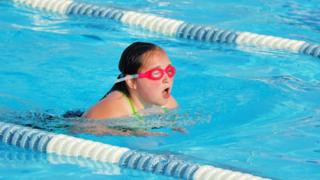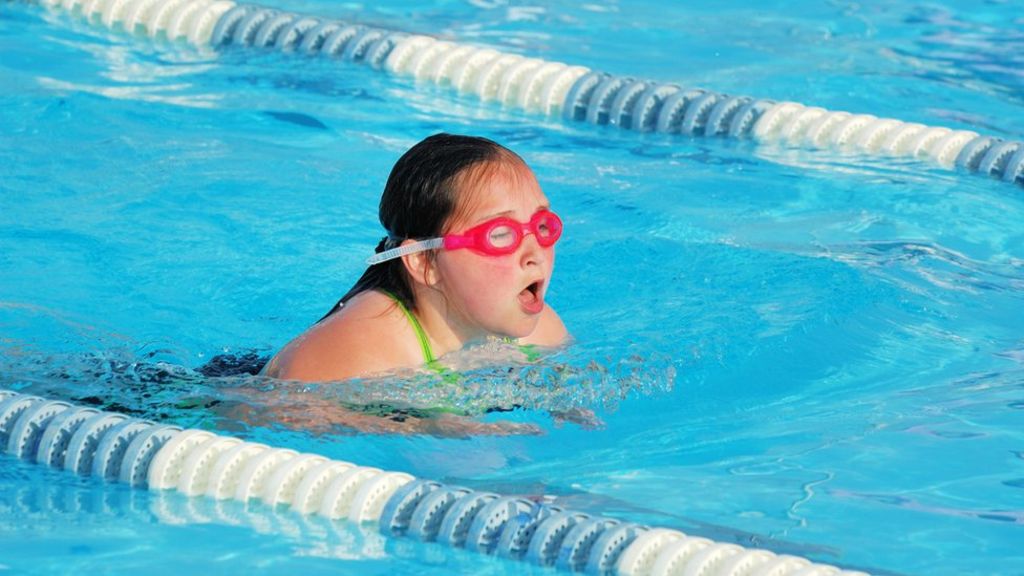- From the age of seven onwards, the amount of practise done by boys and girls is a possibility declining in the UK
- Sitting is supplanting physical work from the time they start institution, investigate shows
- This extends against the accepted view that practise tails off in adolescence – and more rapidly in girls than sons
- Children aged five to 18 are recommended to do at the least 1 hour of practise every day
Adolescence is thought to be the time when children go off practise – but a study in The British Journal of Sports Medicine shows it happens much earlier, around the age of seven.
Researchers from Glasgow and Newcastle tracked the physical activity levels of 400 babes over eight years using small checks worn for a few weeks at a time.
The amount of practise “their childrens” did was measured at age seven and then again at age nine, 12 and 15.
On average, boys spent 75 minutes a day activity when they were seven, descending to 51 instants when they were 15.
 Image copyright Getty Images
Image copyright Getty Images The average girl exhaust 63 minutes a day doing moderate to strenuous physical work when seven years old, which fell to 41 instants age 15.
Most boys and girls in the study did moderate levels of practise at seven, which then gradually tailed off.
But one in five of the sons bucked current trends and managed to maintain their practise levels over the eight years.
They were the ones who started off with the highest levels of work at the age of seven, health researchers said.
Sitting too much
Although the study cannot support what causes the drop-off in physical work, Prof John Reilly, learn author from the University of Strathclyde, announced “something is going wrong in British children” long before adolescence.
He said it coincided with the peak proportion of obesity instances in children and the greatest increases in weight addition – which happen around the age of seven.
Different research on the same group of children found that the time lost to practise was expended sitting instead.
Children aged seven spent half their day sitting, and by the age of 15 this had gone up to three-quarters of their day spent sitting.
“Activity tails off from around the time of going to school, when there’s a change in life, ” Prof Reilly said.
“Schools should be more active homes. There should be more work separates to break up long periods of sitting.”
 Image copyright Getty Images
Image copyright Getty Images But he emphasised that tasks outside institution too had an important role to gambling because children only expended half of their year at institution in total.
The babes who took part in the study lived in Gateshead in north-east England and were tracked between 2006 and 2015.
Eustace de Sousa, national make “for childrens”, young people and families at Public Health England, announced: “It’s a major concern that one in 5 children leaves primary school obese.
“Most babes don’t do enough physical work, which has consequences for their health now and in the future, ” he said.
“It’s up to all of us to ensure babes get their recommended 1 hour of physical work a day.”
Mr De Sousa said this principle was at the core of the government’s childhood obesity intention, which provided extra funded for institutions to get babes moving and is supportive of families to keep babes active outside of school.
NHS Choices adds children and young people should cut back on the time they spend watching TV, playing computer games and hurtling by car.
How much practise should babes be doing?
- at least 60 instants of physical work every day – this should range from moderate work, such as cycling and playground tasks, to spirited work, such as go and tennis
- on three days a week, these activities should involve rehearsals for strong muscles, such as gymnastics, and rehearsals for strong bones, such as startle and ranging
Source: NHS Choices
Five tips-off for going your child to be more active
- go or hertz to institution as often as you can
- find occasion every weekend to do something active with young children
- take the dog for a go – if you haven’t got one, acquire one
- backing your child in any boast, guild or work that fascinates them
- had participated in a enjoyable range or a kindnes objection together

